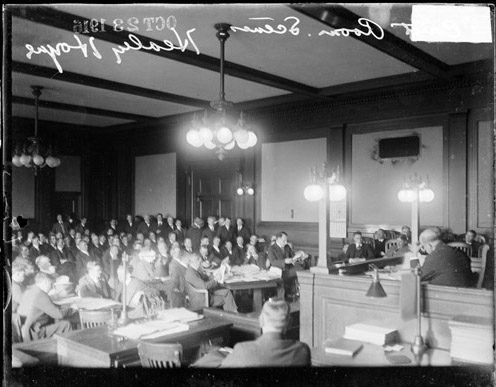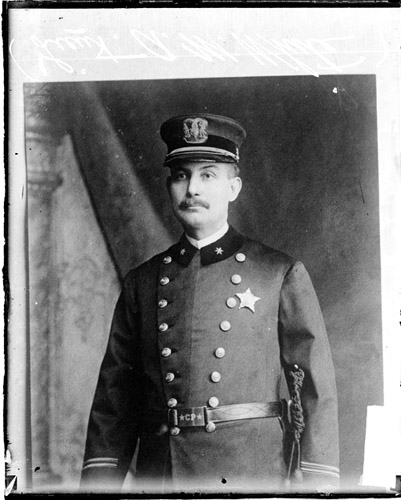The history of the Chicago police and city government during this period is a story of periodic efforts at reform, followed by elections which put back in power corrupt politicians and officers of the law. The police department was under the authority of the Mayor, and the appointment or retention of the Chief of Police for Chicago was one of the first and most important political acts of a new administration.
Political corruption was never stamped out or abolished. The periodic campaigns for reform produced a series of extraordinary official reports documenting the operation of the government and the police during this period. The city of Chicago was a laboratory for experiments in social and political reform. The statistics and commentary in these reports JCLC p.485-490, 1911 Vice Commission Report, JCLC p.490-492, and 1915 Crime Commission Report are invaluable to anyone seeking to understand the institutions of criminal justice and the rule of law during the period.
The most comprehensive and detailed of these reports is the 1929 Illinois Crime Survey. It was a model of sociological research in its day, and remains exemplary today. The newspapers played an important role in exposing corruption in government, in the juridical system, and in the ranks and administration of the police department (JCLC p.456-460). Newspapers published a number of exposes of corruption in government, and continuously criticized the police.
The city government, the police, the ward politicians, and the criminal justice system were inextricable, in periods of reform and in period of corruption (JCLC p.500-514).
The mechanics of one form of judicial corruption is described in detail in a series of newspaper articles, republished as a pamphlet, by a former Chief Judge of the Cook County criminal justice system. This revealing document chronicles exactly how corrupt politicians controlled judicial behavior, in a system in which judges were not only elected, but nominated by the ward politicians.
For further reading:
- Raphael W. Marrow and Harriet I. Carter, In Pursuit of Crime – The Police of Chicago: Chronicle of a Hundred Years, 1833 - 1933, (The Flats Publishing Co., Sunbury, 1996). This account includes many excerpts from the original records of the Chicago Police Department, including this data set. For accounts of police corruption during this period, see especially, “Ch. 7, “Wide-Open Town, 1990-1909,” and Ch. 8, “Corruption - Wholesale, 1910-1919,” pp. 271 -461.
- Flinn, John S., History of the Chicago Police, (Montclair NJ: Patterson Smith, 1887⁄1973). Beginning with events prior to the founding of Chicago, this book is as much a history of the city as it is of the police department. The author provides extensive detail in describing the role of law enforcement during key nineteenth century events (until 1887) in Chicago history, particularly the various instances of civil unrest.
- Lindberg, Charles C., To Serve and Collect: Chicago Politics and Police Corruption from the Lager Beer Riot to the Summerdale Scandal, ( New York, 1991). Beginning with the founding of the city and continuing through the Summerdale Scandal of 1958-1961, Lindberg focuses on law enforcement and political corruption in Chicago.





